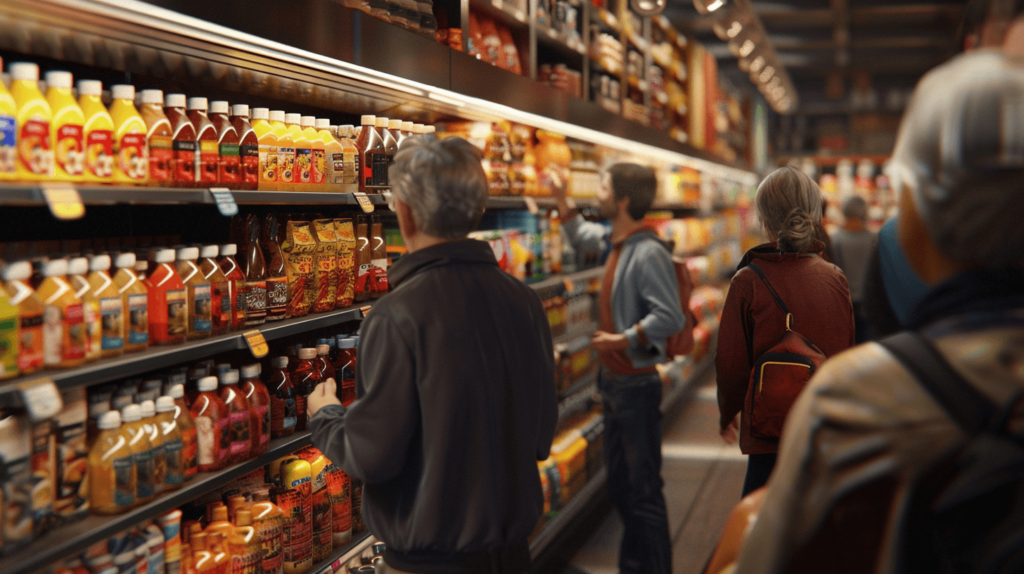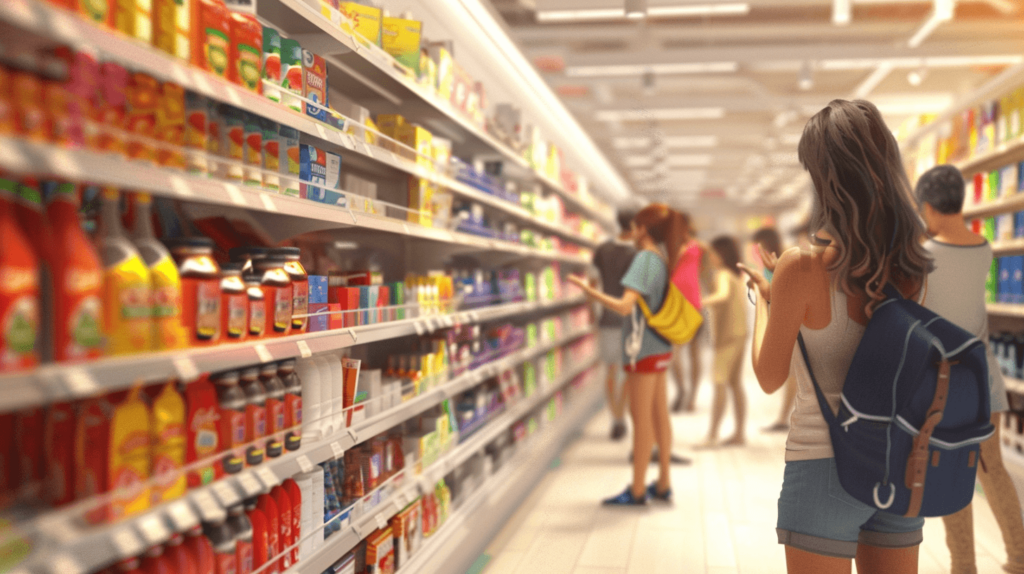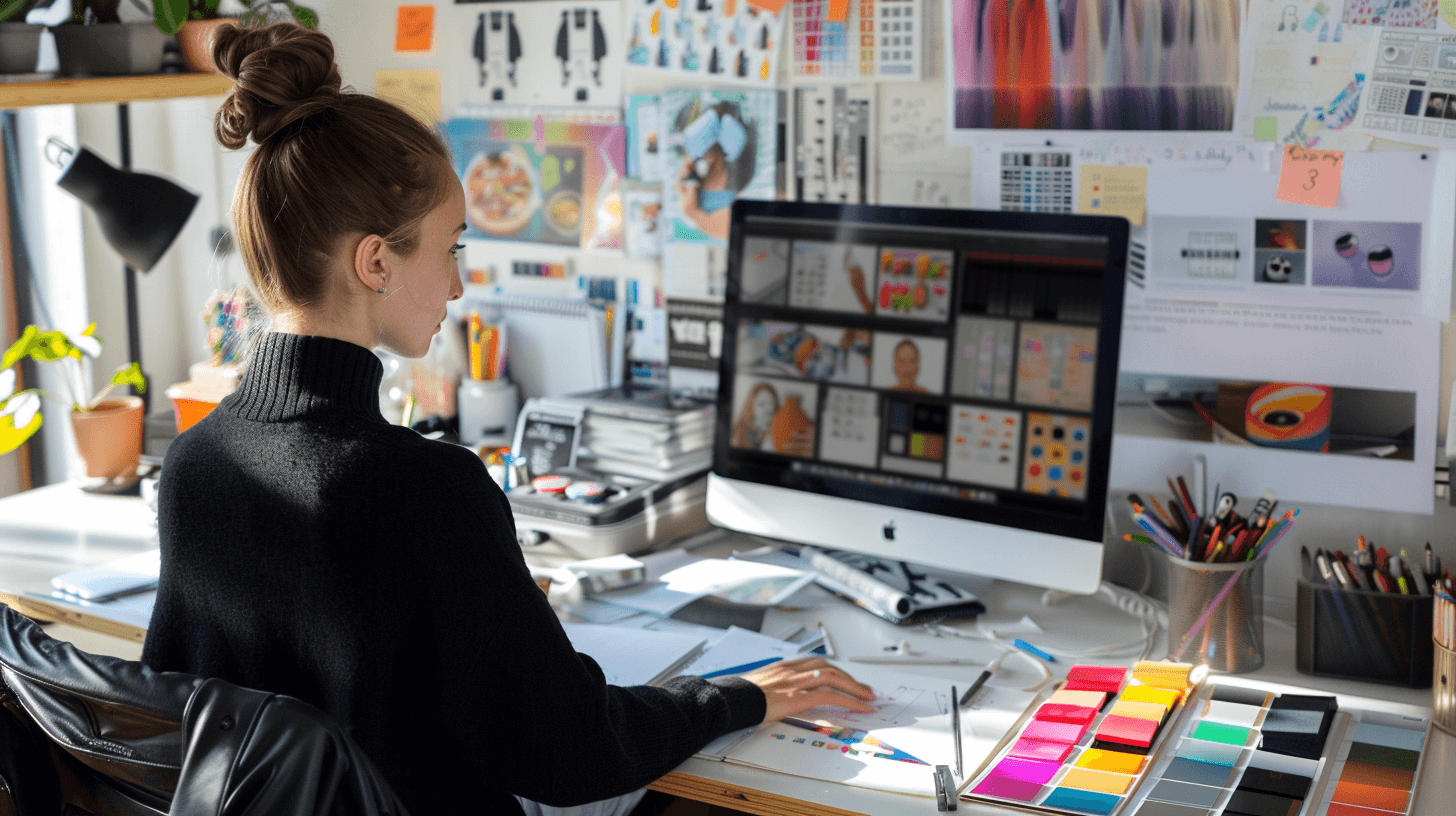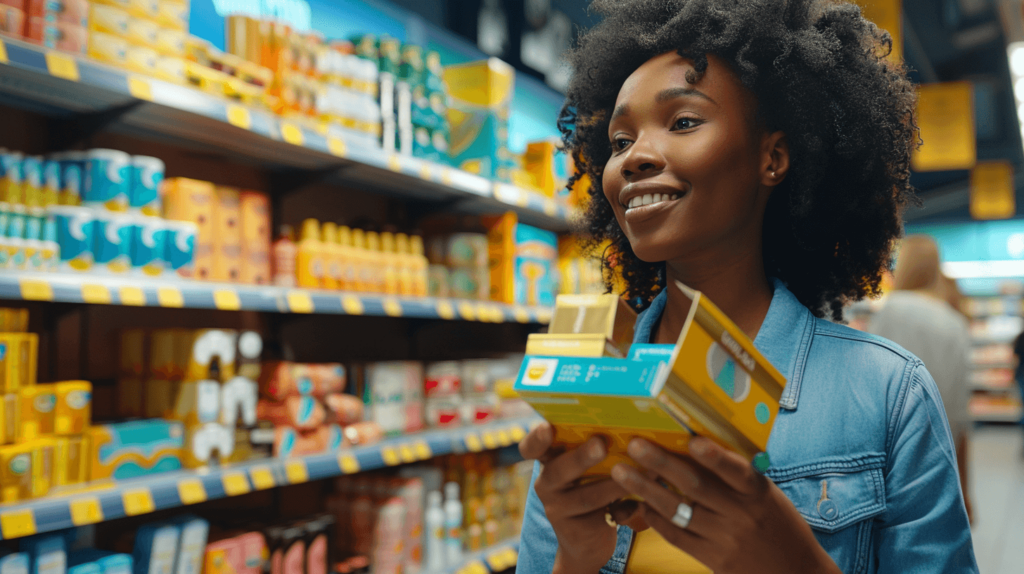Introduction

Imagine this: 72% of American consumers say their purchasing decision is influenced by the packaging design. This striking statistic underscores the immense impact packaging has on buying behavior, demonstrating that it’s much more than just a container for your product. Packaging serves as a powerful marketing tool. It does more than just protect the contents inside; it communicates your brand’s identity, captures consumer attention, and differentiates your product in a competitive marketplace. Effective packaging design beautifully merges aesthetics with functionality, crafting a compelling brand story that resonates with consumers and makes your product stand out on the shelves.
By reading this article, you’ll gain valuable insights into how to find, select, and successfully collaborate with the right packaging designer. You’ll learn strategies to ensure your packaging not only looks appealing but also aligns perfectly with your brand strategy and meets the specific demands of your market. We’ll guide you through choosing a designer who can skillfully navigate the complexities of your industry, whether it’s food, cosmetics, electronics, or any other sector.
This introduction sets the stage for a detailed exploration into the world of packaging design. You’ll discover how to transform your product’s market presence by making informed decisions about whom you hire to shape the visual and functional appeal of your product packaging. Get ready to dive deep into the process and emerge ready to captivate and engage your target audience like never before. Understanding the power of packaging is your first step towards leveraging it to boost your product’s appeal and market performance, ensuring that your product not only meets expectations but exceeds them in every way possible.
Understanding the Role of a Packaging Designer

The role of a packaging designer is multifaceted, blending elements of graphic design, industrial design, and marketing into a single profession. Far from being mere artists, packaging designers are strategic thinkers tasked with a pivotal role: they create packaging that not only protects products but also powerfully communicates the brand’s identity and captures consumer attention in highly competitive markets.
Core Responsibilities:
Design and Development: The journey of a packaging designer begins with concept development, where ideas are born and initially sketched out. This phase evolves into detailed design iterations, as concepts are refined and adjusted to better meet both aesthetic and functional requirements. Packaging designers handle a broad range of tasks— from crafting these initial sketches to developing prototypes and overseeing the final production process. Each step is critical, ensuring the packaging not only looks appealing but is practical and production-ready.
Brand Alignment: A key responsibility of packaging designers is to ensure that their designs align seamlessly with the company’s branding strategy. This involves the strategic use of visual elements, colors, and typography that resonate with the target audience, reinforcing the brand’s identity. Effective packaging design acts as a visual ambassador for the brand, making a strong impression that can sway purchasing decisions at the point of sale.
Skills and Expertise:
- Creativity and Innovation: Creativity is indispensable in packaging design. Designers must constantly innovate to solve practical problems—such as enhancing product visibility, improving durability, and ensuring user convenience. Each design solution must stand out on the shelves, attract consumers, and represent the brand effectively.
- Technical Proficiency: Packaging designers must be technically proficient, not only in design software like Adobe Creative Suite but also in their understanding of materials and production processes. This technical skill extends to current sustainability practices, influencing choices in materials and methods to align with environmental considerations and consumer expectations.
- Market Trend Awareness: Staying updated with market trends is crucial. Trends such as minimalism, the use of eco-friendly materials, or the integration of interactive elements can significantly impact consumer appeal and sales. A good designer needs to integrate these trends into their designs to keep the packaging modern and relevant.
Industry Specialization:
Tailored Expertise: The effectiveness of a packaging designer can be greatly enhanced by specializing in a specific industry. Whether it’s food, cosmetics, electronics, or any other sector, each industry comes with its own set of standards, regulations, and consumer expectations. Having a designer with industry-specific knowledge ensures that the packaging not only looks good but also complies with all relevant regulations and resonates with the target market.
The Secret to becoming a PRO at Packaging Design!
Why You Need a Professional Packaging Designer

Investing in professional packaging design transcends mere aesthetic enhancement; it’s a strategic maneuver that significantly impacts your business’s bottom line. Expertly crafted packaging doesn’t just encase your product; it actively enhances brand perception, boosts visibility on retail shelves, and drives sales by making your product stand out in a crowded marketplace. This is achieved through meticulous design that not only draws attention but also communicates your brand’s identity and values at the point of sale.
Business Impact:
Brand Perception: A professional packaging designer employs visual storytelling to elevate your brand’s image, transforming your packaging into a narrative that speaks volumes to consumers. This narrative helps position your product as a premium offering within its category, influencing consumer perceptions and expectations through strategically chosen visuals and materials that reflect the brand’s ethos and quality.
Increased Visibility: In the competitive retail environment, the strategic design of packaging can make the difference between being noticed or overlooked. Designers utilize a combination of color theory, typographic hierarchy, and innovative structural designs to ensure that your product not only catches the eye of potential buyers but also holds their attention long enough to encourage purchasing decisions.
Driving Sales: The effectiveness of good packaging design in driving sales is supported by robust data. Innovatively redesigned packaging can lead to significant sales increases, often seen as a direct return on the investment in professional design services. This increase is not just due to new customers but also from existing customers who perceive the product as improved or premium due to upgraded packaging.
Brand Consistency:
Cohesive Design Elements: Consistency is key in packaging design, as it reinforces brand identity across various platforms and touchpoints. A professional designer ensures that every piece of packaging, from the smallest label to the largest shipping box, aligns with the overall brand strategy. This consistency helps build a strong, recognizable brand that engenders customer loyalty and trust over time.
Consumer Trust: By maintaining a consistent branding approach through packaging, businesses can forge a stronger bond with consumers, fostering trust and loyalty. This is particularly important in sectors where brand choices directly affect consumer lifestyle or values, such as in organic foods or luxury cosmetics.
Innovation and Trends:
Leveraging Current Trends: A skilled packaging designer not only keeps pace with current design trends but knows when and how to incorporate them into your packaging to gain a competitive edge. Whether it’s the minimalism that appeals to the modern aesthetic, eco-friendly materials that speak to environmental concerns, or interactive elements that engage consumers, these trends can significantly enhance the consumer’s unboxing experience and brand perception.
Adapting to Market Changes: As markets evolve and new technologies emerge, packaging design must also adapt to stay relevant. Professional designers are adept at forecasting and reacting to changes in consumer behavior and market demands, ensuring that your packaging remains both appealing and appropriate. This could mean integrating augmented reality elements into the design or using new biodegradable materials that align with growing consumer demand for sustainability.
Engaging a professional packaging designer is not just about creating a visually appealing product package; it’s about making a strategic investment in your brand’s market presence and equity. This partnership can transform ordinary packaging into a powerful tool that not only meets the market’s current demands but also anticipates future trends and consumer needs, ensuring long-term success and relevance in the marketplace.
Packaging Design Challenge
Finding the Right Packaging Designer

Finding the ideal packaging designer is critical for enhancing your product’s market presence and reinforcing your brand’s identity. This selection process is not merely about filling a position but strategically amplifying your brand’s visual communication and consumer appeal.
Sourcing Candidates:
Professional Networks and Industry Associations: Leverage platforms like LinkedIn and specialized industry associations that focus on packaging design. These networks are invaluable for connecting with experienced designers whose backgrounds have been validated by professional peers. Attend networking events and industry conferences which provide direct access to seasoned professionals and new talents showcasing innovative ideas.
Design Agencies: Partnering with a design agency that specializes in packaging can offer a broad spectrum of creative solutions. These agencies bring a diverse pool of talents under one roof, ensuring a holistic approach to your packaging needs—from conceptualization to final execution. They manage various aspects of the design process, making them a one-stop shop for all packaging design requirements.
Freelance Platforms: Utilize platforms like Upwork, Freelancer, and Behance to access a global pool of designers. These platforms allow you to review extensive portfolios and recruit freelancers based on specific project needs and design aesthetics. They also enable you to post projects, set budgets, and receive bids, facilitating an efficient selection process.
Design Schools: Engage with reputable design schools or universities that are recognized for their design programs. Exploring opportunities for internships or direct recruitment from these institutions can bring fresh, innovative perspectives to your projects. Students and recent graduates are often well-versed in the latest design trends and technologies, offering cutting-edge solutions at competitive prices.
Assessing Portfolios:
Creativity and Relevance: When reviewing portfolios, look for a strong creative flair and a portfolio that aligns with your brand’s vision. It’s crucial that the designer’s style and approach complement your brand’s aesthetics and market positioning.
Effectiveness of Past Projects: Evaluate the impact of the designer’s previous work. Successful case studies or projects within the portfolio should demonstrate a clear understanding of achieving business objectives through design. Look for proven results that highlight an increase in consumer engagement or sales due to their designs.
Interview Process:
Understanding of Brand Objectives: Ask potential candidates how they would align their design style with your brand. Questions such as, “Can you describe a project where you adapted your design approach to meet specific client goals?” can reveal their capacity to tailor their creativity to your business needs.
Creative Process: Inquire about their creative process to understand how they handle project challenges, from initial concept through to completion. This includes their approach to feedback and revisions, which is crucial for a collaborative relationship.
Logistical and Budgetary Constraints: It’s essential to discuss how they manage constraints related to budget and project timelines. Understanding their approach to working within specified parameters will help you assess if they are the right fit for the operational dynamics of your project.
By choosing the right packaging designer, you invest in a strategic asset for your brand, enhancing not just the visual appeal of your products but also strengthening your market positioning and consumer perception. This direct and personal guidance ensures you are well-equipped to make an informed decision, ultimately leading to a successful partnership and outstanding packaging design outcomes.
Integrating a Packaging Designer into Your Project

Integrating a packaging designer into your team is crucial for seamless collaboration and achieving optimal project outcomes. The success of your packaging design projects depends significantly on the designer’s skills and how effectively they are incorporated into the existing team dynamics and processes.
Onboarding Strategies:
- Initial Briefing: A comprehensive initial briefing is essential. This session should include sharing your brand’s vision, mission, and specific project goals with the new designer. Such an in-depth introduction sets the stage for a productive working relationship by aligning the designer’s creative efforts with your brand’s objectives.
- Communication Tools: Effective communication is vital. Utilize tools like Slack, Microsoft Teams, or Asana to keep every team member on the same page. These platforms ensure that the designer is well integrated into the team’s communication flow, facilitating smoother exchanges of ideas and feedback.
- Project Management Strategies: Implement robust project management practices to maintain clear timelines, deliverable schedules, and milestone reviews. These practices are crucial for managing expectations and keeping the project on track, avoiding any potential misalignments or delays.
Collaboration Techniques:
Regular Meetings: Hold regular meetings to enable ongoing dialogue between the designer and the rest of the team. These meetings are pivotal for providing updates, exchanging feedback, and making necessary adjustments to the project’s direction, ensuring everyone is aligned with the current status and future steps.
Mutual Understanding: It’s important to develop a mutual understanding of the project goals, target audience, and market positioning. This might involve collaborative sessions with marketing teams, product developers, and other relevant stakeholders to ensure that all aspects of the project are harmoniously aligned.
Feedback and Revision Processes:
- Constructive Feedback: Establish a method for providing clear and objective feedback. It’s crucial to focus on how each revision or suggestion can enhance the project’s outcomes, rather than merely reflecting personal preferences.
- Revision Cycles: Set up a structured process for revisions, delineating specific phases of the project where feedback is most beneficial. This process should balance creativity with practicality, ensuring that the designs are not only innovative but also executable.
- Encouraging Creativity: While structured feedback is essential, it’s equally important to allow the designer enough creative freedom to explore new ideas. This can lead to more innovative and impactful designs that significantly enhance the project’s appeal and effectiveness.
The importance of these strategies in fostering a productive and harmonious relationship with your packaging designer cannot be overstated. By addressing the reader directly and using an engaging tone, this guide aims to make the integration process actionable and clear. These strategies are designed not just to incorporate a designer into your project but to maximize the creative and business potential of your collaborative efforts, ensuring that the final product not only meets but exceeds your expectations.
Conclusion

As we conclude our exploration of packaging design, let’s reflect on the transformative impact that a well-chosen packaging designer can have on a product’s success in the market. The right designer not only elevates the aesthetic appeal of a product but also significantly enhances its marketability through strategic design that aligns perfectly with your brand identity and meets consumer preferences.
Throughout this article, we have delved into the crucial role of packaging designers in enhancing brand perception, ensuring brand consistency, and capitalizing on current design trends to attract consumers. Each element of design, from color schemes to material selection, is meticulously crafted to communicate your brand’s story and values. Effective packaging design profoundly influences consumer purchasing decisions, increases visibility on retail shelves, and, most importantly, drives sales by making your products stand out in a competitive marketplace.
Now is the time to begin your search for the perfect packaging designer. Utilize the comprehensive guidelines provided to thoroughly assess each candidate. Look for a designer who not only possesses the necessary creative skills but also understands the specific needs of your industry. To ensure you make a well-informed decision, revisit the sections on sourcing candidates, assessing portfolios, and conducting the interview process. Selecting the right designer is essential for aligning with your brand’s strategic objectives.
This powerful statement underscores the profound impact that thoughtful design has on transforming ordinary objects into extraordinary consumer experiences. Remember, hiring a skilled packaging designer is not merely a tactical move but a strategic decision crucial for enhancing consumer engagement with your product and building a lasting brand. By embracing this guidance, you’re investing in a fundamental component of your business strategy that will propel your brand towards greater success.




